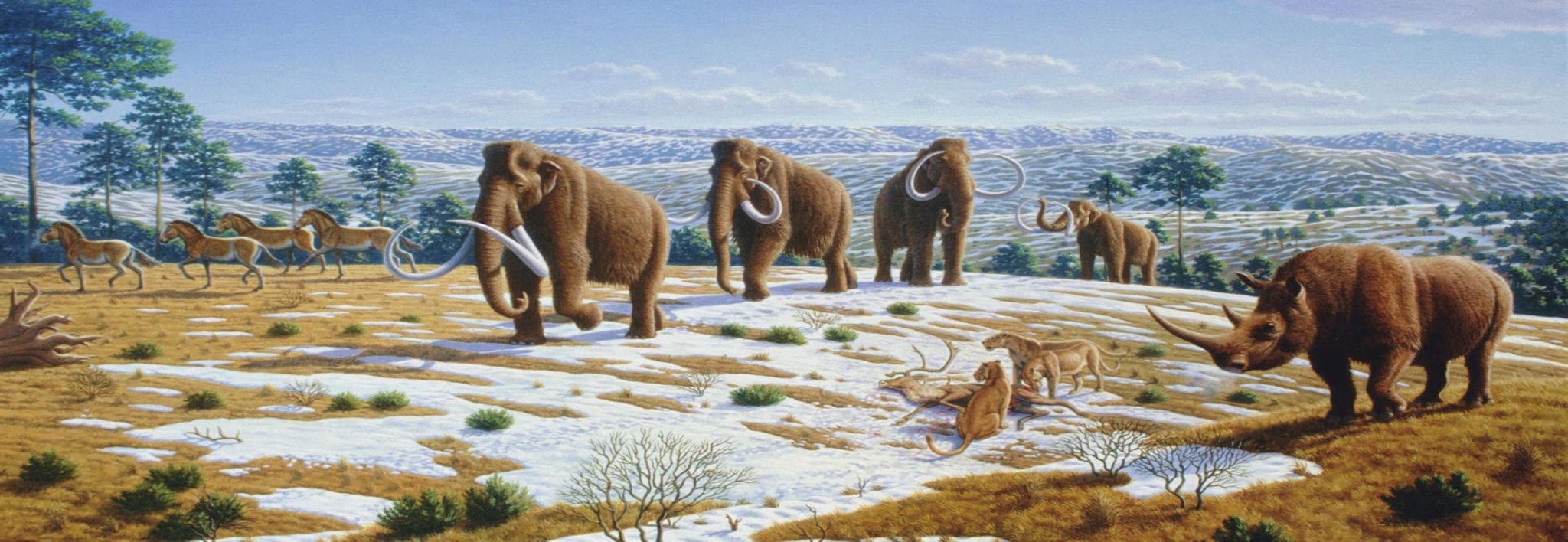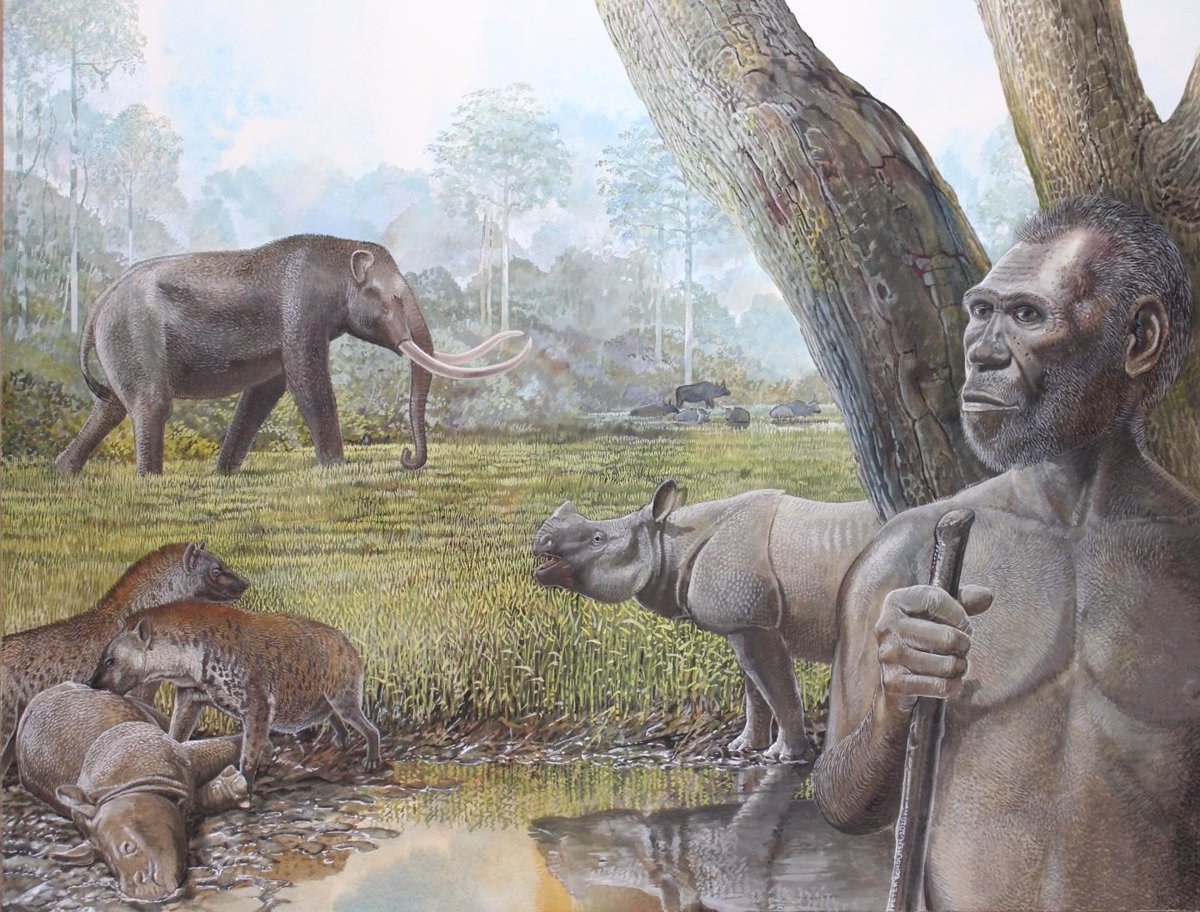
National Parks Service Tule Springs Fossil Beds Megafauna
The drivers of megafauna extinctions have drastically shifted between the Pleistocene (between 2.6 million and 11,700 years before present), Holocene [11,700 to 100 years before present (8, 9)], and Anthropocene epochs [<70 years before present ()].During the Pleistocene, slowly operating geological, climatic, and biological processes, such as fluctuations in sea levels and the resulting.

21.JPG (1600×1011) Ancient animals, Extinct animals, Megafauna
Pleistocene Megafauna in Beringia By Pamela Groves, University of Alaska An artist's interpretation of ice age fauna. Image courtesy of Mauricio Antón At the peak of the last ice age, 20,000 years ago, when most of northern North America was covered by massive glaciers, much of Alaska was ice-free and home to a diverse assortment of large mammals.

extinct megafauna mega fauna Pinterest
Large herbivores and carnivores (the megafauna) have been in a state of decline and extinction since the Late Pleistocene, both on land and more recently in the oceans. Much has been written on the timing and causes of these declines, but only recently has scientific attention focused on the consequences of these declines for ecosystem function.

Pleistocene Park Archives Revive & Restore
The cause of the extinction of giant birds, reptiles, and mammals in the late Pleistocene is, for palaeobiology, what Fermat's last theorem was for mathematics ( ): a long-standing scientific puzzle that has captured the imagination of specialists and nonspecialists alike ( ).

Megafauna and ecosystem function from the Pleistocene to the
The disappearance of many North American megafauna at the end of the Pleistocene is a contentious topic. While the proposed causes for megafaunal extinction are varied, most researchers fall into.

Fauna of the Pleistocene by Mauricio Antón Prehistoric Wildlife
Pleistocene Era Extinctions . Before early modern humans left Africa to colonize the rest of the world, all of the continents were already populated by a large and diverse animal population, including our hominid cousins, Neanderthals, Denisovans, and Homo erectus.Animals with body weights greater than 100 pounds (45 kilograms), called megafauna, were abundant.

Herbivorous megafauna in Pleistocene North America r/quatria
The worldwide extinction of megafauna during the Late Pleistocene and Early Holocene is evident from the fossil record, with dominant theories suggesting a climate, human or combined impact.

Pin on Ancient America
Flora e megafauna del Pleistocene inferiore nella Spagna settentrionale - illustrazione di Mauricio Antón: mammut, leoni che mangiano una renna, cavalli selvatici e un rinoceronte lanoso. La megafauna del Pleistocene è il termine collettivo utilizzato per indicare gli animali di grandi dimensioni (la cosiddetta megafauna) diffusi sulla Terra.

Homininos y megafauna, víctimas de cambios de clima en el Pleistoceno
Megafaunal extinctions The end of the Pleistocene was marked by the extinction of many genera of large mammals, including mammoths, mastodons, ground sloths, and giant beavers. The extinction event is most distinct in North America, where 32 genera of large mammals vanished during an interval of about 2,000 years, centred on 11,000 bp.

Pleistocene Africa Prehistoric wildlife, Megafauna, Ancient animals
Large herbivores and carnivores (the megafauna) have been in a state of decline and extinction since the Late Pleistocene, both on land and more recently in the oceans. Much has been written on the timing and causes of these declines, but only recently has scientific attention focused on the consequences of these declines for ecosystem function.

The Pleistocene Megafauna
To most, the term "Megafauna" conjures up images of large African mammals, such as elephants, giraffes, rhinoceroses, and lions. By comparison, today the largest land mammals in South America are wild camelids, tapirs, jaguars, and capybaras (Wilson and Reeder 2005).Yet, as recently as 10,000 years ago the landscape of South America contained remarkable beasts—massive mammals that.

Hipparion is an extinct genus of horse that lived on grassy steppes in
Abstract. Giant vertebrates dominated many Pleistocene ecosystems. Many were herbivores, and their sudden extinction in prehistory could have had large ecological impacts. We used a high-resolution 130,000-year environmental record to help resolve the cause and reconstruct the ecological consequences of extinction of Australia's megafauna.

Megafaunal Biodiversity of Pleistocene Mexico Naturewasmetal
Individual examples of faunal turnover and extinctions of large marine vertebrates (collectively known as 'marine megafauna', which includes, but is not limited to marine mammals, seabirds,.

Pleistoceno en Mexico by serchio25 on DeviantArt Extinct animals
Toward the end of the Pleistocene, North America lost 37 mammalian genera including over 70% of its megafauna, commonly defined as terrestrial taxa exceeding 44 kg 1.Although part of a broader.

Pleistoceno en Mexico by serchio25 on deviantART Extinct animals
34 Citations 104 Altmetric Metrics Abstract Large-scale changes in global climate at the end of the Pleistocene significantly impacted ecosystems across North America.

Proboscídeos prehistóricos Extinct animals, Prehistoric animals
In North America, Pleistocene-Holocene deglaciation [18 to 6 thousand years ago (ka); 1 ka = 1000 calendar years ago] was marked by massive biotic upheaval, including the extinction of 34 megafaunal genera (), species migration and reorganization of terrestrial communities (), the rise and decline of plant communities without modern analogs (), and increased biomass burning ().